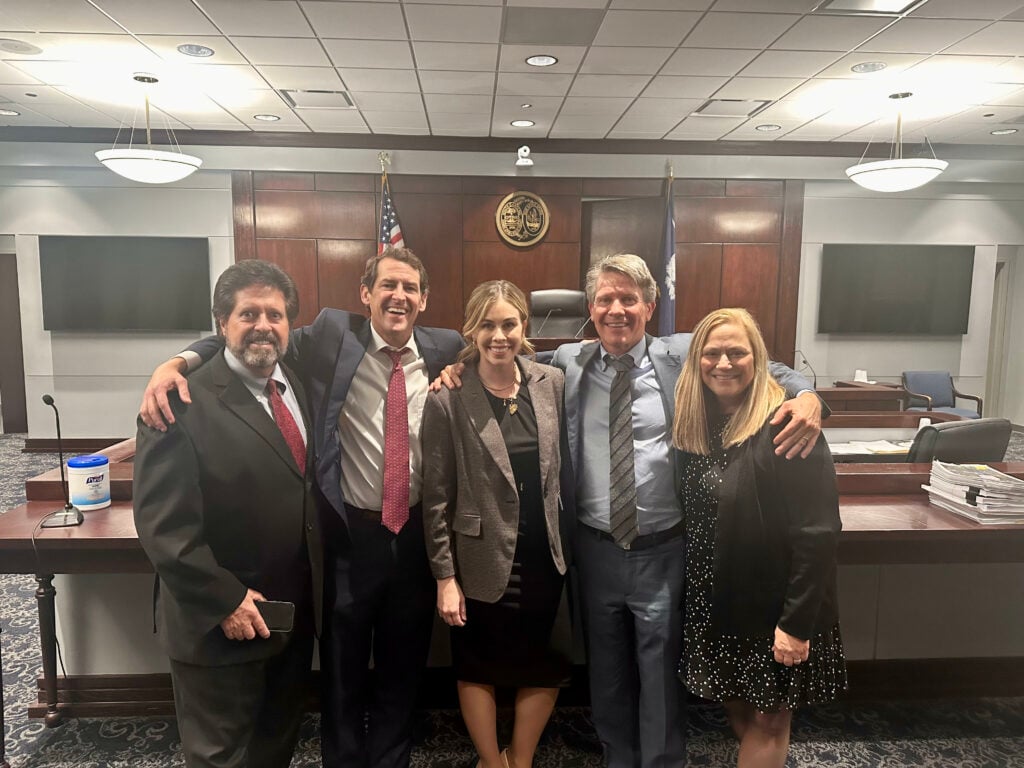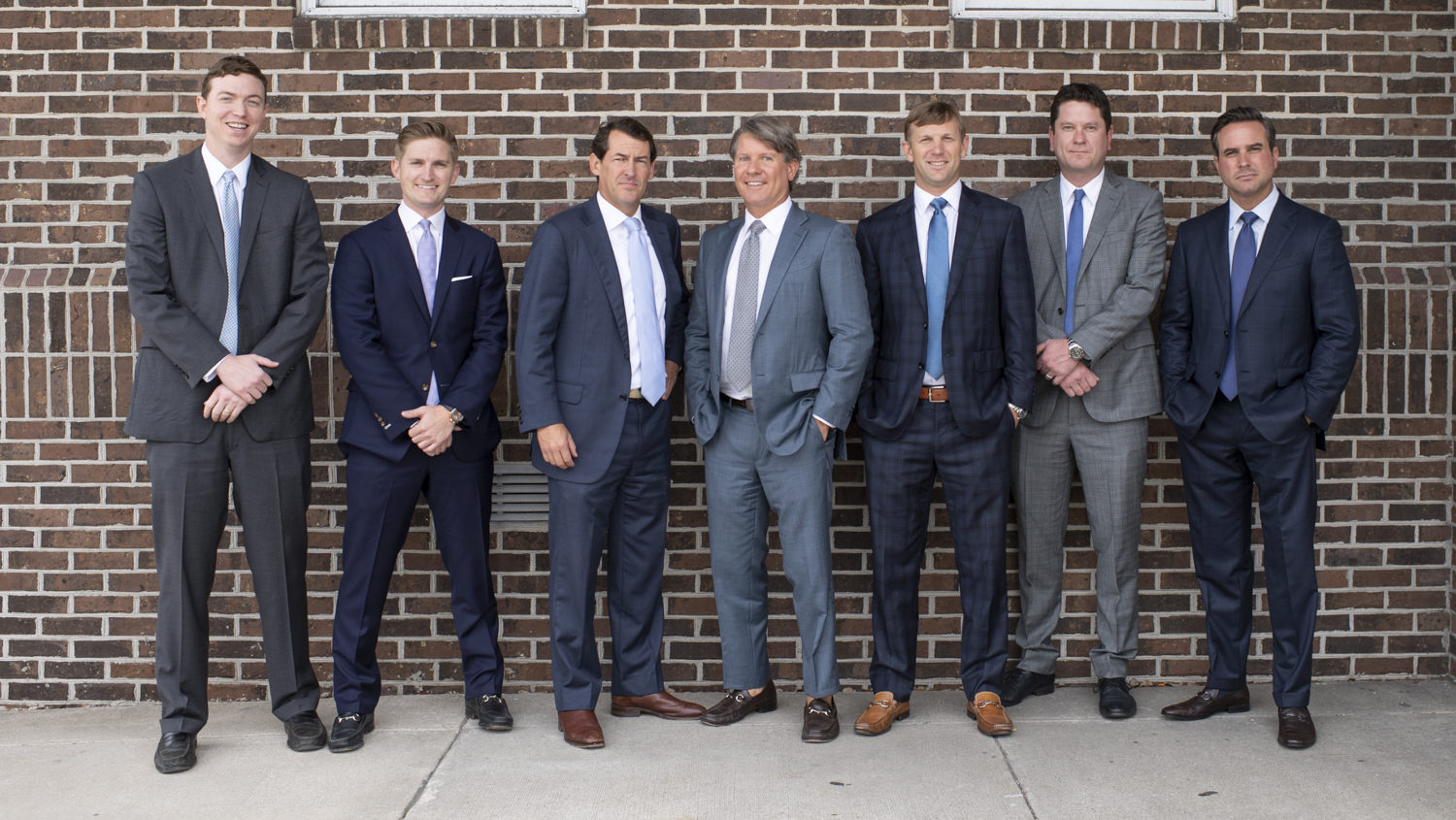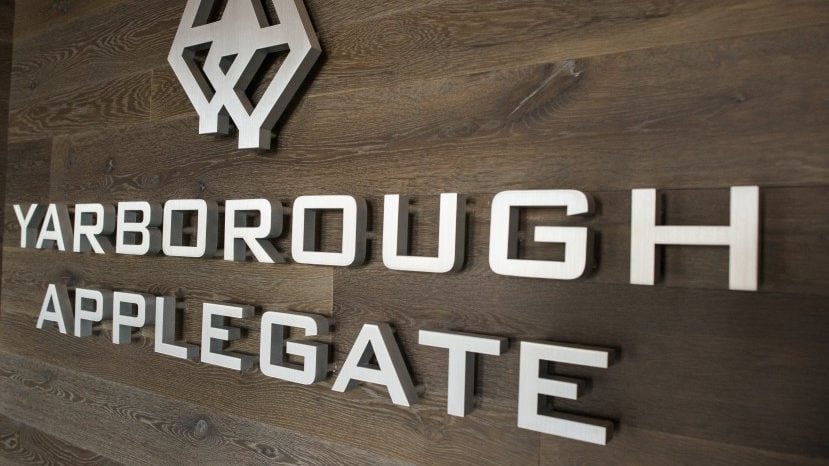Last week, Yarborough Applegate secured a landmark jury verdict against Amazon for $44.6 million, including $30 million in punitive damages, after a man was catastrophically injured in a motorcycle collision with an Amazon van on Orangeburg Road in Summerville, South Carolina. This distracted driving case marks the first time Amazon has tested with a jury the issue of whether the online retail and global logistics giant will be held responsible for injuries caused by one of its 285,000 Amazon Delivery Associates (drivers) it calls independent contractors.
Yarborough Applegate attorneys David Yarborough, Alexandra Heaton, and William Applegate, working alongside Nick Clekis of the Clekis Law Firm in Charleston, represented a motorcyclist who sustained a traumatic brain injury and numerous orthopedic injuries in September 2021 when an Amazon Delivery Associate failed to yield to the right of way and turned left directly into his path. We filed suit against the driver, the local delivery company MJV Logistics, and Amazon, Amazon Services and Amazon Logistics Inc.
A HOTLY CONTESTED CASE
For two years, this case was heavily litigated by the Amazon defendants. Amazon has sought to contractually shield itself from liability for the “last mile” delivery of its packages (that is, the final step in transporting Amazon packages from a hub or fulfillment center to customer doorsteps) in Amazon-branded and owned blue vans by setting up a network of individually owned Delivery Service Partners who Amazon labels as “independent contractors” and tasks with hiring and employing the Delivery Associate drivers.
In this case, Amazon persistently disputed liability on those very grounds: that the delivery driver was a direct employee of the Delivery Service Partner—not Amazon directly. All Amazon did, defense argued, was contract with the Delivery Service Partner for a specific result. Amazon vehemently denied maintaining any right to control the means and methods of the deliveries, despite overwhelming evidence to the contrary.
“I have never seen a stronger law school textbook case of a Principal/Agent relationship than that which Amazon has created here,” says Yarborough. “Amazon not only had the right to control; it exercised actual control over every aspect of the Delivery Service Partner and Delivery Associate hiring, training, execution, and delivery process. It collected data and measured the metrics of the drivers’ behaviors and deliveries on a weekly basis and used those metrics to determine payments to the Delivery Service Partners, it provided all of the tools of the job and it maintained the right to terminate or ‘offboard’ the drivers if they violated Amazon’s policies.”
TAKING AMAZON TO TRIAL
At trial, counsel for Amazon maintained its argument that the independently owned Delivery Service Partner and the driver who was a direct employee of the local Delivery Service Partner, both of which operated out of an Amazon-owned hub facility in Hanahan, South Carolina, were merely independent contractors—not agents of Amazon—to combat any vicarious liability.
But we successfully countered that in South Carolina, what parties have labeled themselves in an agreement or contract is not determinative of the relationship. “Rather, the test is whether a purported principal—here, Amazon—had the right to control and direct the means and methods of the agent’s work,” explains Applegate. “In this case, there was overwhelming evidence that Amazon controls and directs nearly every aspect of these Delivery Service Partners and their delivery routes and consistently monitors drivers while on their routes using mobile technology that Amazon requires.”
In this case, Amazon owned the van the at-fault driver was operating; designed the route he was assigned on the date of the collision; assigned all packages to that route; and monitored the driver through eDriving by Mentor, an application that tracks unsafe driving behavior like speeding, hard braking, cornering, and distracted driving events.
Throughout discovery, we learned that the driver had more than 90 counts of distracted driving in his five months of employment prior to the date of the September 2021 collision—all of which was recorded by the Amazon-required eDriving application and reported to Amazon. Additionally, a forensic review of his cell phone records and phone revealed extremely high data usage on the date of the collision. A digital forensics expert testified that the usage was consistent with viewing high resolution videos, including at the time of the crash. The same forensic imaging also revealed numerous other instances of distracted driving, including posts on his public social media accounts depicting him filming videos while operating a moving vehicle—some in his Amazon uniform and inside his Amazon van—access to adult entertainment websites while on his Amazon delivery routes the day before and the day of the collision, and a significant YouTube watch history on the date of the collision.
In the face of all this forensic evidence, the driver admitted for the first time on the witness stand that he was engaged in distracted driving on the day of the crash looking at pornography and other videos on his phone while on his delivery route.
We also presented evidence to the jury that the same company Amazon used to do a driving history and criminal background check also offers a social media background check that, had it been used, would have revealed the driver to be unfit for a commercial delivery role because of his dangerous distracted driving habits that he publicly posted. Additionally, Amazon had other technology—namely the Netradyne camera system—that had been installed in some, but not all, of its vans in 2021. The driver admitted that if the Netradyne system had been in his van, he would not have been engaging in distracted driving.
THE NATIONAL IMPACT
On December 7, 2023, the jury found that Amazon, in addition to being vicariously liable for the acts of the Delivery Service Partner and Delivery Associate, was also grossly negligent in its hiring, supervision, and retention of the Delivery Associate, given all that it knew or should have known about his dangerous driving habits.
The impact of this case on roadway safety across the country will be monumental. Amazon’s Delivery Service Partner Program is a relatively new facet of the Seattle e-commerce giant’s decade-old delivery business that has now eclipsed FedEx, UPS, and USPS to become the largest delivery service provider in the United States. The program includes a network of more than 3,000 independently owned small businesses that Amazon vets, selects, and contracts with to perform “last mile” deliveries. These Delivery Service Partners employ more than 285,000 delivery drivers that help Amazon deliver more than 10 million packages per day.
“The jury’s $30 million punitive award against Amazon appears to be a message to Amazon that the jury expects better vetting and supervision of its delivery drivers by Amazon and that its conduct in this case was not only unacceptable but reckless,” Heaton notes.
In South Carolina, a statutory cap on punitive damages limits punitive damages to no more than three times actual damages. In this case, the award was well within the statutory cap, as the actual damages award of $14,412,147 breaks down as follows: $11,112,147 in economic damages and $3,300,000 for non-economic damages. The jury also awarded $175,000 in punitive damages against the DA and $50,000 against the DSP.
Read more about this case in Lawyers Weekly here.
Disclaimer: Every case is unique, and prior results do not guarantee future outcomes.








